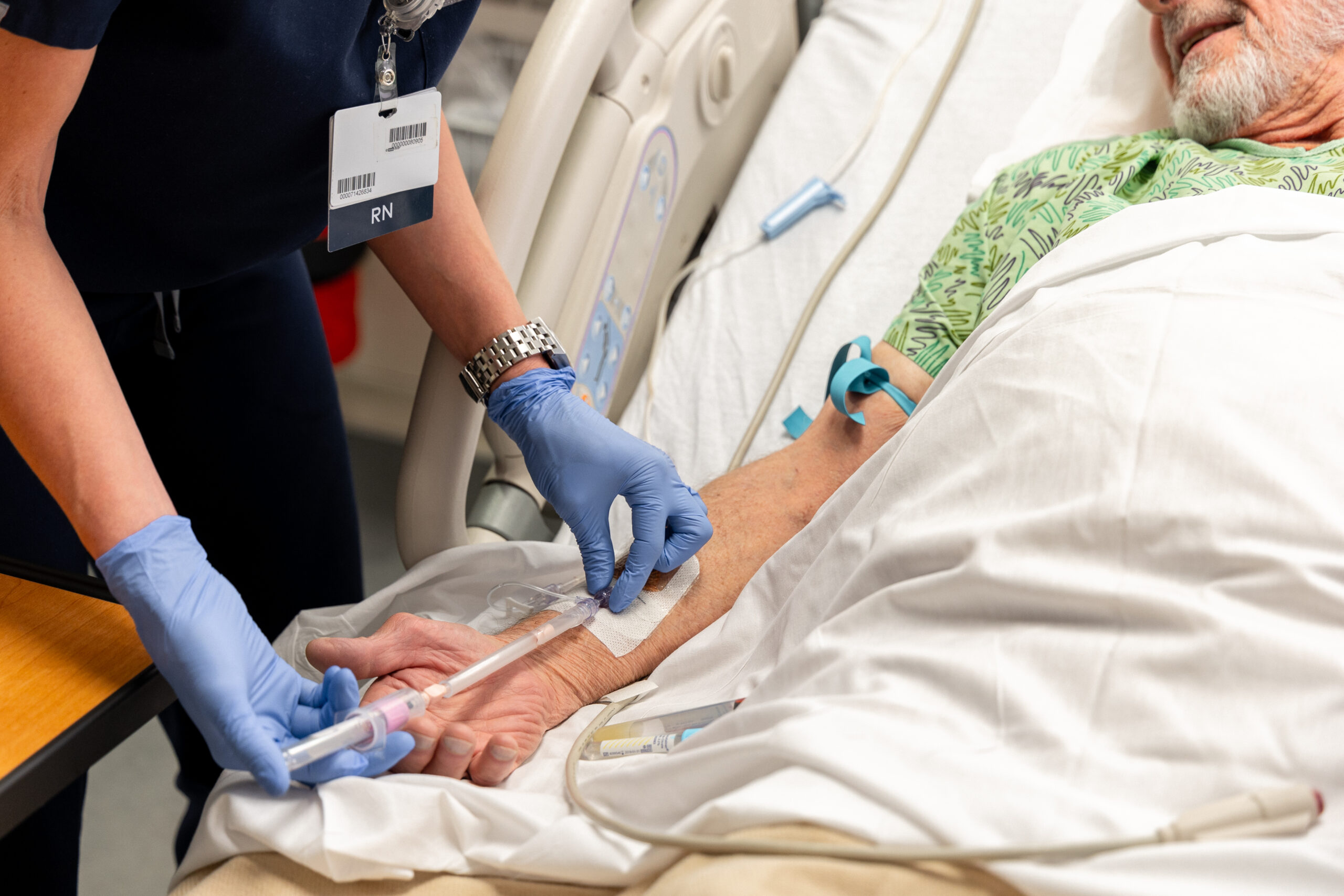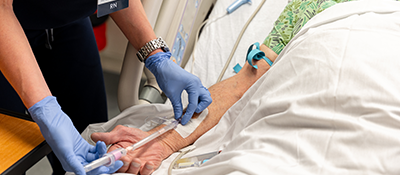Blood collection is a fundamental aspect of modern healthcare systems which has not seen the same level of innovation compared to the rest of medicine in the past century. Venipuncture, the most common form of blood collection in hospitals today, is performed by inserting a needle into a vein to draw a patient’s blood. This method has served its purpose for many years, but the lack of alternatives in many use cases is cause for numerous challenges within the healthcare system as a whole and for the patient as an individual. The Ally needle-free blood collection device seeks to change these systems for the betterment of patient and provider satisfaction. In a healthcare landscape where nearly 500 million inpatient blood draws are performed each year, informing a staggering 70% of all clinical decisions, the need for a revolutionary product like The Ally has never been more apparent. In this blog, we’ll explore deeper into the situation, problems, implications, and the crucial need for The Ally in the world of blood collection.
Situation
Blood collection plays a pivotal role in the diagnosis and treatment of various medical conditions. It is the starting point for many clinical decisions, making the accuracy and efficiency of the process essential. Currently, the gold standard for blood collection is venipuncture, where a needle is inserted into a patient’s vein for each blood draw performed. This method is bogged down by several issues which can cause a delay in diagnostics, stress on medical staff and added pain for patients.
Problem
The average hospital patient receives 3.5 needle-sticks each day. Studies have shown that approximately 25% of patients require two needle sticks or more to obtain blood specimen. The challenges associated with accessing veins in certain patient groups are especially prevalent. Fragile veins pose a significant hurdle, particularly among elderly individuals, children, and those with chronic illnesses. These individuals often have delicate veins that can be challenging to access, resulting in the need for multiple needle sticks and potential discomfort during the procedure. Additionally, another issue arises when dealing with obese patients, who may necessitate multiple needle insertions due to the increased depth of their veins. This not only leads to heightened discomfort for these patients but also demands more time and resources for successful blood collection. The resulting delays in blood collection set the stage for delayed treatment, delayed recovery and an increase in the length that a patient is confined to the hospital.
Implications
The problems associated with traditional blood collection methods have far-reaching implications for the healthcare system:
-
Increased Costs: The longer hospitalizations and additional supplies required for traditional blood collection methods increase the overall cost of healthcare. This cost burden is often shifted to patients, insurance companies, and healthcare institutions.
-
Decreased Turnaround Times on Beds: Blood collection delays can lead to bottlenecks in hospital workflows, resulting in reduced bed turnover rates. This, in turn, affects the overall efficiency and patient satisfaction in healthcare facilities.
-
Difficulty of Forecasting: Forecasting the amount of time a phlebotomist should plan to spend for their scheduled draws becomes very difficult when they don’t have an accurate way to plan for the day when each scheduled patient could either take three minutes or half an hour to collect a suitable sample.
-
High Phlebotomist Turnover Rates: Phlebotomists are essential healthcare professionals. Due to the frustration that many phlebotomists feel with the current situation and nicknames like “vampires” given by dissatisfied patients, phlebotomists are shown to have particularly high turnover rates. High turnover rates among them can lead to a shortage of skilled personnel, affecting the quality of patient care and further worsening the satisfaction of the existing phlebotomists.
-
Patient Discomfort and Anxiety: The pain and discomfort associated with multiple needle sticks can contribute to patient anxiety and reluctance to undergo necessary blood tests. This can have a direct impact on the quality and timeliness of patient care.
Solution
 The Ally Needle-Free Blood Collection Device. The healthcare industry is in dire need of a revolutionary solution to address the problems associated with traditional blood collection methods. The Ally needle-free blood collection device is the answer to the issues at hand. By connecting with a patient’s PIV Catheter, the Ally provides a sterile access point for the practitioners to sample blood from a patient. Through using the Ally, hospitals and healthcare providers can establish accurate timelines for routine blood collection all while greatly reducing wait times and increasing patient satisfaction by increasing comfort and avoiding repetitive needle sticks.
The Ally Needle-Free Blood Collection Device. The healthcare industry is in dire need of a revolutionary solution to address the problems associated with traditional blood collection methods. The Ally needle-free blood collection device is the answer to the issues at hand. By connecting with a patient’s PIV Catheter, the Ally provides a sterile access point for the practitioners to sample blood from a patient. Through using the Ally, hospitals and healthcare providers can establish accurate timelines for routine blood collection all while greatly reducing wait times and increasing patient satisfaction by increasing comfort and avoiding repetitive needle sticks.
How the Ally Works

The Ally utilizes a patient’s existing PIV catheter as an access point to their blood flow. Although an obvious solution to the issues discussed above on the surface, accessing blood through the PIV has several requirements that were top of mind in the design process when we created the Ally. Firstly, the Ally needed to be compatible with the catheters that are most commonly present within our healthcare system. The Ally comes in a 20- and 22-gauge sizing, combined with threading that is an exact fit with the female end on the catheter, the Ally attaches onto the end of the PIV catheter creating a secure fit. As Ally advances into the PIV, the design allows for haptic feedback for the practitioner using the device. The reinforced blood collection tube is designed to avoid kinking and device failure so that blood can freely travel to a vacuum collection tube once the end of the blood collection tube is fully deployed within the vein. This device uses a non-invasive method to obtain blood samples, making the process more comfortable for patients. It eliminates the need for multiple needle sticks, reduces patient discomfort, and significantly improves the blood collection procedure.
Benefits of The Ally
-
Preferred Procedure: The Ally offers a dependable needle-free alternative to traditional venipuncture, making blood collection a more comfortable experience for patients and providers.
-
Reduced Costs: By minimizing the need for additional supplies and reducing the time required for blood collection, The Ally can help lower healthcare costs.
-
Improved Efficiency: The Ally’s efficiency and dependability in blood collection can lead to shorter hospitalizations and faster turnaround times on beds, ultimately enhancing the healthcare system’s overall performance.
-
Reduced Phlebotomist Turnover: With The Ally, phlebotomists can perform their duties with less stress, reducing turnover rates and ensuring a consistent level of care.
-
Enhanced Patient Experience: Patients no longer have to endure the pain and anxiety of repetitive needle sticks, improving their overall healthcare experience.
In conclusion, The Ally needle-free blood collection device is a groundbreaking solution to the challenges posed by traditional venipuncture. As a critical element of healthcare, blood collection plays a pivotal role in informing clinical decisions. The Ally not only improves the patient experience but also reduces costs, enhances efficiency, and addresses the issues of fragile veins, obese patients, and high phlebotomist turnover rates.
By embracing innovative solutions like The Ally, the healthcare industry can revolutionize the blood collection process, making it more patient-friendly and cost-effective. It’s time to say goodbye to the pain and discomfort associated with repetitive needle sticks and embrace a new era in blood collection. The Ally is here to change the way we draw blood, ensuring a brighter and more comfortable future for patients and healthcare professionals alike.

